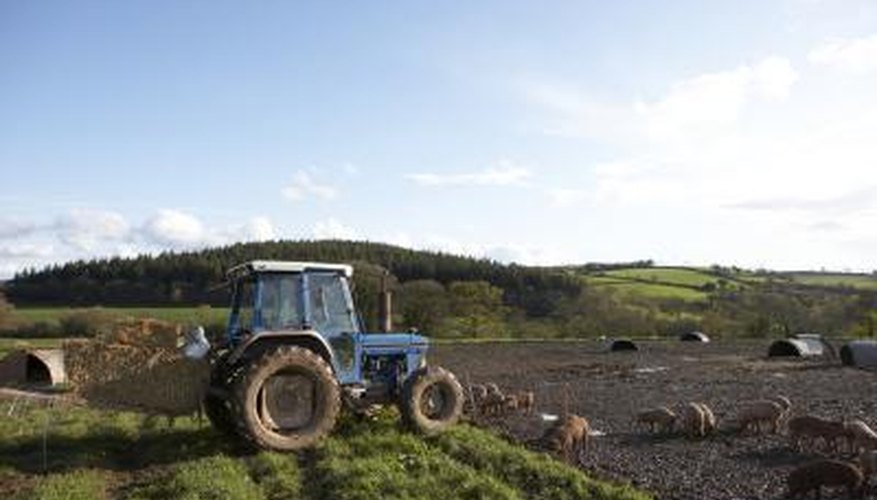Mixed farming operations are those that combine two or more enterprises in a single system. For example, a popular mixed farming method is to raise both crops and livestock. Although mixed farming operations cannot reach the same economies of scale as single-focus operations, and may require more resources, there are certain advantages associated with this particular style of agriculture.
Disadvantage: Reduced Economies of Scale
One of the largest disadvantages of mixed farming operations is that they tend to be limited in capacity. An operator must spread his resources, such as time, money, labour and land over two different ventures. For example; a farmer who plants crops and raises beef cattle cannot plant as much corn as the farmer who only grows crops. Therefore, he cannot take advantage of the benefits of economies of scale that are inherent to large setups, such as reduced costs and increased efficiency.
- One of the largest disadvantages of mixed farming operations is that they tend to be limited in capacity.
- Therefore, he cannot take advantage of the benefits of economies of scale that are inherent to large setups, such as reduced costs and increased efficiency.
Disadvantage: More Resources Required
Another disadvantage of mixed farming is the additional resources required. For example; a farmer who only grows wheat needs planting and harvesting equipment, such as ploughs, disks, planters, sprayers and combines. A farmer who milks dairy cattle in addition to growing wheat requires more equipment, such as a mixer wagon, bucket tractor and skidsteer. As a result, the opportunity costs of mixed farming tends to be higher than single-focus farming.
- Another disadvantage of mixed farming is the additional resources required.
- A farmer who milks dairy cattle in addition to growing wheat requires more equipment, such as a mixer wagon, bucket tractor and skidsteer.
Advantage: Reduced Risk
A mixed farming operator, in essence, diversifies his portfolio. Most types of farming tend to be volatile and dependent on market prices. A dairy farmer experiences profitable months when the milk price is high and, in turn, struggles when the price gets inevitably low. Since a mixed farmer has two or more ventures, his risk is spread out. If one operation experiences low profitability, there is a chance the other operation does well. Therefore, the overall income of his farm is more stable.
- A mixed farming operator, in essence, diversifies his portfolio.
- Since a mixed farmer has two or more ventures, his risk is spread out.
Advantage: Re-utilise Resources
Although mixed farming can have higher initial and opportunity costs because of the greater diversity of supplies and equipment needed, there is also the possibility that the resources can be reutilised between ventures. For example; the manure produced by dairy cows can be spread on crop fields and reduce the amount of fertiliser required. A bucket tractor needed to feed beef cows round bales can also be used to plant wheat fields.
